Andrew’s Story: Securing a settlement after a life-changing bicycle accident
Andrew’s story:Securing a $945,000 settlement after a life-changing bicycle accident Since this story was written, Andrew has sadly passed away. His voice was a call
In January 2018, our client was a passenger involved in a train accident. The train failed to stop as intended and collided with the buffer stop at the end of the platform resulting in our client being flung from her seat.
As a result of the incident, our client sustained a deep laceration to the left knee which resulted in a permanent visible scar. Fortunately for our client, she did not sustain serious physical injuries however the incident had a severe psychological impact on our client. Our client was diagnosed as suffering from a post-traumatic stress disorder and the incident had a very serious impact on her day-to-day life.
The Plaintiff contacted Gerard Malouf and Partners in April 2018 to enquire about making a claim for Compensation for Public Liability. We immediately got to work in collating our client’s medical records and seeked information from Defendant in relation to the incident. This was clearly a negligent act giving rise to a compensable claim.
As a result of our in-depth investigations, we were able to avoid the expense of obtaining an expert report. We commenced proceedings in the District Court of NSW and the Defendant filed its Defence in response to the Plaintiff’s Statement of Claim, admitting that it owed the Plaintiff a duty of care and had breached its duty of care in the circumstances.
Prior to the incident, our client was a young woman who was studying to be a psychologist. Whilst our client suffered from some pre-existing psychological problems prior to the injury, our public liability team were able to establish through independent medical reports that our client’s pre-existing psychological condition was stable at the time of the incident and the train incident severely aggravated her condition. All evidence was collated and an informal settlement conference was conducted.

Public liability refers to the responsibilities owners or occupants of a public space have to protect anyone who enters. If the owners or occupants fall short of these responsibilities, resulting in an injury, a case for compensation can be made.
Some of the most common incidents covered by public liability law include:
Following an initial meeting, the first task will be to establish the general facts of the case. This will include your medical diagnosis, which will need to be confirmed and documented by a doctor; and proof that the person or company at fault owed you a duty of care, which will need to be demonstrated. Together, this will show that your injury occurred when they breached that duty of care.
From there a further investigation will proceed—contacting and interviewing witnesses, speaking with expert consultants, and more—all in order to bolster the strength of your case even further. Only once this process is complete, and your claim can be demonstrated and proven in full, will the process move on to the next step.
Public liability claims enable you to recoup the financial and emotional costs of suffering an injury due to someone else’s negligence. Defendants regularly offer monetary settlements to claimants, particularly if they acknowledge liability and believe they would lose in court.
But should you accept the settlement or proceed to the later stages of litigation instead, where a judge will have the final decision? Every case is different, but here are some of the factors you may wish to consider before making your choice:
Andrew’s story:Securing a $945,000 settlement after a life-changing bicycle accident Since this story was written, Andrew has sadly passed away. His voice was a call
Maria’s story: $232,500 after a shopping centre trip and fall Maria’s story Maria, a jewellery sales consultant, experienced how quickly life can change when an
Jennifer’s Journey:Achieving Justice and $242,500 After a Slip and Fall Injury Jennifer’s story In October 2022, a routine lunch outing turned into a life-altering experience
Mansour’s story:Securing $870,000 settlement after a heavy vehicle collision This image does not depict our actual client. Mansour’s story In early 2024, Mansour’s life was
A wife’s perspective:Securing a $850,000 settlement after a workplace accident David’s story through Paula’s eyes On August 1, 2019, what started as a routine day
Nick’s Journey:Securing a $250,000 public liability claim outside of the statute of limitations Jump to Result Nick’s story In February 2020, Nick’s life changed dramatically
In the spirit of reconciliation GMP Law acknowledges the Traditional Custodians of country throughout Australia and their connections to land, sea, and community. We pay our respects to their Elders past, present, and emerging, and extend that respect to all Aboriginal and Torres Strait Islander peoples today.

Your location is currently:
Please wait while you are redirected to the right page...